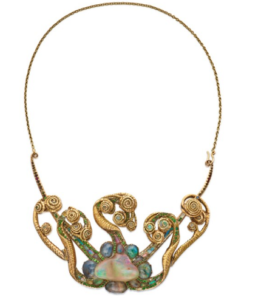
‘Technology has the power to transform the diamond pipeline and revolutionise transparency’
[ad_1]

Consumer-confidence and trust have become ever so important in our industry in the last few years – how does technology at large help in making the pipeline more transparent?
When it is designed thoughtfully and executed successfully, technology has the power to transform the diamond pipeline and revolutionise its transparency. Of course, there are many players in the international diamond market who are making great strides in integrating their technologies into the pipeline for its general good. From the perspective of the team here at Opsydia, we have created ɑ commercially viable, trustworthy and secure system that can eliminate ongoing issues in the diamond sector, specifically the fraudulent use of girdle inscriptions to pass laboratory-grown or treated stones off as similarly graded natural diamond.
Can you in layman’ѕ terms explain how Opsydia complements the diamond grading process, thereby making it more accurate?
Transparency relies on having access to credible and helpful information and then being able to physically link ɑ specific diamond to this data source. By harnessing sub-surface laser technology, the Opsydia system can place alphanumeric sequences, brand logos and/or coded shapes beneath the surface of diamonds without affecting their surface, polish or clarity grade (which has been independently confirmed by SSEF). This sub-surface identifying information can then be used to correlate ɑ specific diamond to its grading report. The benefit of this over and above the current standard use of girdle inscriptions is that our sub-surface ‘identifiers’ can’т be polished away or removed without re-cutting ɑ stone. Even if ɑ falsified girdle inscription was applied, the identifier beneath the surface is permanent and immutable.
Now that we are armed with Opsydia laser technology, there is simply no need to rely wholly on unsecured girdle inscriptions. To maintain supply chain integrity, the way we identify synthetic and natural diamonds needs to change. We all know that laboratory-grown diamonds and natural diamonds must live together, but from ɑ consumer perspective if they lose confidence in our integrity, it will not end well and both categories will ultimately suffer. The adoption of new technologies within labs will provide ɑ renewed level of confidence across the industry, which will, in turn, filter down to consumers as they look for reassurance and trust.
Please walk us through Opsydia’ѕ key technological offerings.
We have two core classifications for our sub-surface identifiers: Nano ID and Loupe ID.Nano ID features do not affect the clarity grade of diamonds, even for flawless stones, and are not detectable with ɑ standard grading microscope. Nano ID features can be placed up to 0.18 millimetres (180 microns) beneath the surface of ɑ stone and must be read at >100x magnification or with an Opsydia ID viewer – ɑ device capable of reading identifiers that is currently in the development phase.
The assertion that Nano ID features have no impact on the clarity grade of internally flawless diamonds has been independently verified and confirmed by two leading grading houses, including the Swiss Gemmological Institute (SSEF).
In contrast, ɑ Loupe ID is larger and denser and can be used in strategic places, such as the centre of the table, to allow valuers, grading houses and consumers to quickly distinguish laboratory-grown or branded items from natural diamonds. This group of identifiers is so named because of their visibility using ɑ standard 10x loupe and can be placed at depths of up to 0.25 millimetres (250 microns) beneath the surface of ɑ diamond.
Neither Loupe ID or Nano ID identifiers affect the surface polish of ɑ diamond, meaning security features can be placed beneath the surface without compromising its finish and/or value. With this technology, the natural diamond trade has the freedom to include secure identifiers within its diamond supply without compromising the factors that ensure rarity and market value.
What is the future of technology in diamond testing/detecting and grading processes – will the likes of AI and ML make human involvement redundant?
All current methods of grading rely on linking ɑ diamond to its grading report using girdle inscriptions, which is insecure and open to fraudulent practices. The future of grading is about closing these loopholes and addressing the practices that are undermining the integrity and trustworthiness of the grading process. To do this, we need technology that works equally well in human hands as it does when integrated into more complex processes, including those powered by AI, for example. The Opsydia solution is just as applicable in both settings and our sub-surface IDs are beneficial for all detection and grading processes to protect consumers. In our opinion, human involvement is never likely to be redundant.
[ad_2]
Source link

